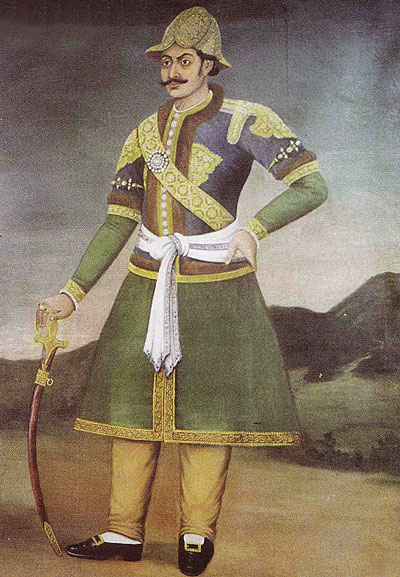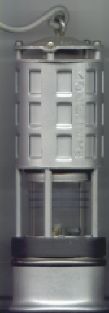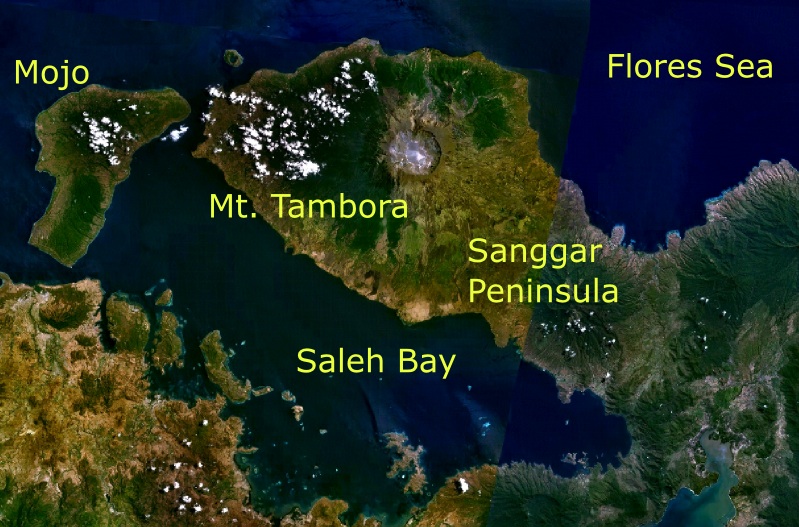|
1816
This year was known as the '' Year Without a Summer'', because of low temperatures in the Northern Hemisphere, possibly the result of the Mount Tambora volcanic eruption in Indonesia in 1815, causing severe global cooling, catastrophic in some locations. Events January–March * December 25 1815–January 6 – Tsar Alexander I of Russia signs an order, expelling the Jesuits from St. Petersburg and Moscow. * January 9 – Sir Humphry Davy's Davy lamp is first tested underground as a coal mining safety lamp, at Hebburn Colliery in northeast England. * January 17 – Fire nearly destroys the city of St. John's, Newfoundland. * February 10 – Friedrich Karl Ludwig, Duke of Schleswig-Holstein-Sonderburg-Beck, dies and is succeeded by Friedrich Wilhelm, his son and founder of the House of Glücksburg. * February 20 – Gioachino Rossini's opera buffa '' The Barber of Seville'' premières at the Teatro Argentina in Rome. * March ... [...More Info...] [...Related Items...] OR: [Wikipedia] [Google] [Baidu] |
Year Without A Summer
The year 1816 is known as the Year Without a Summer because of severe climate abnormalities that caused average global temperatures to decrease by . Summer temperatures in Europe were the coldest on record between the years of 1766–2000. This resulted in major food shortages across the Northern Hemisphere. Evidence suggests that the anomaly was predominantly a volcanic winter event caused by the massive 1815 eruption of Mount Tambora in April in the Dutch East Indies (known today as Indonesia). This eruption was the largest in at least 1,300 years (after the hypothesized eruption causing the volcanic winter of 536), and was perhaps exacerbated by the 1814 eruption of Mayon in the Philippines. Description The Year Without a Summer was an agricultural disaster. Historian John D. Post has called this "the last great subsistence crisis in the Western world".Evans, RoberBlast from the Past ''Smithsonian Magazine''. July 2002, p. 2 The climatic aberrations of 1816 had their ... [...More Info...] [...Related Items...] OR: [Wikipedia] [Google] [Baidu] |
Gorkha War
The Anglo-Nepalese War (1 November 1814 – 4 March 1816), also known as the Gorkha War, was fought between the Gorkhali army of the Kingdom of Nepal (present-day Nepal) and the British forces of the East India Company (EIC, present-day India). Both sides had ambitious expansion plans for the mountainous north of the Indian subcontinent. The war ended with the signing of the Treaty of Sugauli in 1816 AD, which ceded some Nepalese controlled territory to the EIC. The British war effort was led by the East India Company and supported by a coalition of native states; the Garhwal Kingdom, the Patiala State and the Kingdom of Sikkim against the Kingdom of Gorkha. The Kingdom of Gorkha's war effort was led mostly by the two Thapa families; Thapa dynasty and Family of Amar Singh Thapa. Historical background The Shah era of Nepal began with the Gorkha king Prithvi Narayan Shah invading Kathmandu valley, which consisted of the capital of the Malla confederacy. Until that time only ... [...More Info...] [...Related Items...] OR: [Wikipedia] [Google] [Baidu] |
Safety Lamp
A safety lamp is any of several types of lamp that provides illumination in coal mines and is designed to operate in air that may contain coal dust or gases, both of which are potentially flammable or explosive. Until the development of effective electric lamps in the early 1900s, miners used flame lamps to provide illumination. Open flame lamps could ignite flammable gases which collected in mines, causing explosions; safety lamps were developed to enclose the flame and prevent it from igniting the surrounding atmosphere. Flame safety lamps have been replaced in mining with sealed explosion-proof electric lights. Background Damps or gases Miners have traditionally referred to the various gases encountered during mining as damps, from the Middle Low German word ''dampf'' (meaning " vapour"). Damps are variable mixtures and are historic terms. * ''Firedamp'' Naturally occurring flammable mixtures, principally methane. * '' Blackdamp'' or ''Chokedamp'' Nitrogen and carbon diox ... [...More Info...] [...Related Items...] OR: [Wikipedia] [Google] [Baidu] |
Mount Tambora
Mount Tambora, or Tomboro, is an active stratovolcano in West Nusa Tenggara, Indonesia. Located on Sumbawa in the Lesser Sunda Islands, it was formed by the active subduction zones beneath it. Before 1815, its elevation reached more than high, making it one of the tallest peaks in the Indonesian archipelago. Tambora violently erupted in a series of eruptions beginning 5 April, 1815, culminating in the largest eruption in recorded human history and the largest of the Holocene (10,000 years ago to present). The magma chamber under Tambora had been drained by previous eruptions and underwent several centuries of dormancy as it refilled. Volcanic activity reached a peak that year, culminating in an explosive eruption. The explosion was heard on Sumatra island, more than away. Heavy volcanic ash rains were observed as far away as Borneo, Sulawesi, Java, and Maluku islands, and the maximum elevation of Tambora was reduced from about to . Although estimates vary, the dea ... [...More Info...] [...Related Items...] OR: [Wikipedia] [Google] [Baidu] |
The Barber Of Seville
''The Barber of Seville, or The Useless Precaution'' ( it, Il barbiere di Siviglia, ossia L'inutile precauzione ) is an '' opera buffa'' in two acts composed by Gioachino Rossini with an Italian libretto by Cesare Sterbini. The libretto was based on Pierre Beaumarchais's French comedy '' The Barber of Seville'' (1775). The première of Rossini's opera (under the title ''Almaviva, o sia L'inutile precauzione'') took place on 20 February 1816 at the Teatro Argentina, Rome, with designs by Angelo Toselli. Rossini's ''Barber of Seville'' has proven to be one of the greatest masterpieces of comedy within music, and has been described as the opera buffa of all "opere buffe". After two hundred years, it remains a popular work. Composition history Rossini's opera recounts the events of the first of the three plays by French playwright Pierre Beaumarchais that revolve around the clever and enterprising character named Figaro, the barber of the title. Mozart's opera ''The Marriage of ... [...More Info...] [...Related Items...] OR: [Wikipedia] [Google] [Baidu] |
Davy Lamp
The Davy lamp is a safety lamp for use in flammable atmospheres, invented in 1815 by Sir Humphry Davy.Brief History of the Miner's Flame Safety Lamp at minerslamps.net. Accessed 7 July 20121 It consists of a wick lamp with the flame enclosed inside a mesh screen. It was created for use in coal mines, to reduce the danger of explosions due to the presence of methane and other flammable gases, called '' firedamp'' or '' [...More Info...] [...Related Items...] OR: [Wikipedia] [Google] [Baidu] |
Friedrich Wilhelm, Duke Of Schleswig-Holstein-Sonderburg-Glücksburg
Friedrich Wilhelm, Duke of Schleswig-Holstein-Sonderburg-Glücksburg (german: Friedrich Wilhelm Paul Leopold; 4 January 1785 – 17 February 1831) inherited the title of Duke of Schleswig-Holstein-Sonderburg-Beck as Frederick William IV in 1816. He subsequently changed his title to Duke of Schleswig-Holstein-Sonderburg-Glücksburg in 1825 and founded a line that includes the Royal Houses of Denmark, Greece, Norway, and the Commonwealth realms. Early life Friedrich Wilhelm was born in Lindenau, near Königsberg, East Prussia, to Friedrich Karl Ludwig, Duke of Schleswig-Holstein-Sonderburg-Beck (20 August 1757 – 24 April 1816) and Countess Friederike of Schlieben (28 February 1757 – 17 December 1827). He was the third and youngest child of the couple, and the only son. In 1804, he was sent to Denmark, where he was an officer of the Danish army during the Napoleonic Wars. Marriage and issue On 26 January 1810, Friedrich Wilhelm married his relative Princess Louise Caroli ... [...More Info...] [...Related Items...] OR: [Wikipedia] [Google] [Baidu] |
Friedrich Karl Ludwig, Duke Of Schleswig-Holstein-Sonderburg-Beck
Friedrich Karl Ludwig, Duke of Schleswig-Holstein-Sonderburg-Beck (; 20 August 175724 April 1816) was the ninth and penultimate Duke of Schleswig-Holstein-Sonderburg-Beck. Friedrich Karl Ludwig was the son of Prince Karl Anton August of Schleswig-Holstein-Sonderburg-Beck and his wife Countess Charlotte of Dohna-Schlodien. Life Friedrich Karl Ludwig was born in Königsberg, Kingdom of Prussia. At the age of two he lost his father who dies from wounds he received in the battle of Kundersdorf. He joined the Prussian Army in 1777 upon the request of King Frederick the Great. By 1781 he was a staff officer in the Regiment von Schlieben and by 1787 he commanded a grenadier battalion based in Königsberg. He assisted in the suppression of the 1794 Kościuszko Uprising and was Governor of Kraków in 1795. He retired from Prussian service as a lieutenant general in 1797 and spent the rest of his life improving agriculture in Holstein. He died in Wellingsbüttel Manor, now part of Hambur ... [...More Info...] [...Related Items...] OR: [Wikipedia] [Google] [Baidu] |
Gioachino Rossini
Gioachino Antonio Rossini (29 February 1792 – 13 November 1868) was an Italian composer who gained fame for his 39 operas, although he also wrote many songs, some chamber music and piano pieces, and some sacred music. He set new standards for both comic and serious opera before retiring from large-scale composition while still in his thirties, at the height of his popularity. Born in Pesaro to parents who were both musicians (his father a trumpeter, his mother a singer), Rossini began to compose by the age of 12 and was educated at music school in Bologna. His first opera was performed in Venice in 1810 when he was 18 years old. In 1815 he was engaged to write operas and manage theatres in Naples. In the period 1810–1823 he wrote 34 operas for the Italian stage that were performed in Venice, Milan, Ferrara, Naples and elsewhere; this productivity necessitated an almost formulaic approach for some components (such as overtures) and a certain amount of self-borrowing. During ... [...More Info...] [...Related Items...] OR: [Wikipedia] [Google] [Baidu] |
Humphry Davy
Sir Humphry Davy, 1st Baronet, (17 December 177829 May 1829) was a British chemist and inventor who invented the Davy lamp and a very early form of arc lamp. He is also remembered for isolating, by using electricity, several elements for the first time: potassium and sodium in 1807 and calcium, strontium, barium, magnesium and boron the following year, as well as for discovering the elemental nature of chlorine and iodine. Davy also studied the forces involved in these separations, inventing the new field of electrochemistry. Davy is also credited to have been the first to discover clathrate hydrates in his lab. In 1799 he experimented with nitrous oxide and was astonished at how it made him laugh, so he nicknamed it "laughing gas" and wrote about its potential anaesthetic properties in relieving pain during surgery. Davy was a baronet, President of the Royal Society (PRS), Member of the Royal Irish Academy (MRIA), Fellow of the Geological Society (FGS), and a mem ... [...More Info...] [...Related Items...] OR: [Wikipedia] [Google] [Baidu] |
Nepal
Nepal (; ne, नेपाल ), formerly the Federal Democratic Republic of Nepal ( ne, सङ्घीय लोकतान्त्रिक गणतन्त्र नेपाल ), is a landlocked country in South Asia. It is mainly situated in the Himalayas, but also includes parts of the Indo-Gangetic Plain, bordering the Tibet Autonomous Region of China to the north, and India in the south, east, and west, while it is narrowly separated from Bangladesh by the Siliguri Corridor, and from Bhutan by the Indian state of Sikkim. Nepal has a diverse geography, including fertile plains, subalpine forested hills, and eight of the world's ten tallest mountains, including Mount Everest, the highest point on Earth. Nepal is a multi-ethnic, multi-lingual, multi-religious and multi-cultural state, with Nepali as the official language. Kathmandu is the nation's capital and the largest city. The name "Nepal" is first recorded in texts from the Vedic period of the ... [...More Info...] [...Related Items...] OR: [Wikipedia] [Google] [Baidu] |
Society Of Jesus
, image = Ihs-logo.svg , image_size = 175px , caption = ChristogramOfficial seal of the Jesuits , abbreviation = SJ , nickname = Jesuits , formation = , founders = , founding_location = , type = Order of clerics regular of pontifical right (for men) , headquarters = Generalate:Borgo S. Spirito 4, 00195 Roma-Prati, Italy , coords = , region_served = Worldwide , num_members = 14,839 members (includes 10,721 priests) as of 2020 , leader_title = Motto , leader_name = la, Ad Majorem Dei GloriamEnglish: ''For the Greater Glory of God'' , leader_title2 = Superior General , leader_name2 = Fr. Arturo Sosa, SJ , leader_title3 = Patron saints , leader_name3 = , leader_title4 = Ministry , leader_name4 = Missionary, educational, literary works , main_organ = La Civiltà Cattolic ... [...More Info...] [...Related Items...] OR: [Wikipedia] [Google] [Baidu] |








